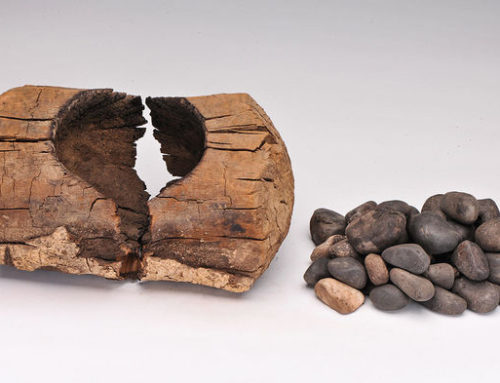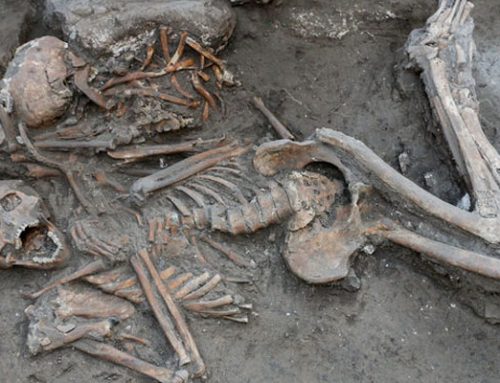ERLITOU, CHINA—In the 6th century B.C.E., Confucius referred to the ancient Xia dynasty as China’s first, based on documents that were old in his day. For generations of Chinese scholars, the Xia was China’s initial great flowering of civilization, inaugurating a history that unfolded in methodical fashion from city-state to empire (see main text and timeline, p. 930). But there was no physical evidence for the dynasty’s existence, so in 1959 an archaeological team set out to find its seat. Along this marshy section of the Luo River in the central plains of the Yellow River Valley, they uncovered a 300-hectare site dating to roughly the correct period—and promptly hailed it as the long-lost first capital.
But did the Xia, said to have flourished from 2100 B.C.E. to 1600 B.C.E., really exist? New, unpublished dates and excavation data from this modest site challenge its status as the capital of the Xia. “We have proven that Erlitou is the largest and most culturally developed site with the biggest population,” says Chen Guoliang, an assistant researcher at the site, standing in a gentle spring rain on the roof of the dig house. “But what it was exactly requires more research.”
Until the archaeological finds of the past half-century, most of what we knew of early Chinese history was based largely on ancient texts, which have a status here somewhat comparable to that of the Bible in the West. They provide a detailed account of how the Xia succumbed to the Shang dynasty, which in turn gave over to the Zhou dynasty around 1045 B.C.E. Although the texts were written long after most of the events, digs have confirmed many of the assertions made about the Shang and later eras. But the Xia dynasty has remained elusive, despite the identification of Erlitou as its capital.
During the past decade, Xu Hong of the Institute of Archaeology in Beijing has directed extensive excavations here, although digging has stopped for now to allow archaeologists to interpret their data and the site has been reburied and planted with wheat. The digs have revealed the details of Erlitou’s rise, including a central complex, possibly a palace, in the first phase. Then the settlement grew, the palace area was walled, and a street network was built. A section of road with wagon tracks provides the oldest evidence for wheeled vehicles in China, though whether they were pulled by humans or draft animals is unclear. Many bronze and other precious artifacts, including a spectacular, snakelike turquoise dragon, were apparently made in the palace area and found in large numbers in nearby tombs of the elite. At its peak, as many as 20,000 people may have lived at Erlitou before it slowly faded into obscurity around 1500 B.C.E.
“It looks like a planned city, separated by function, with relatively clustered tombs, workshop areas, pottery workshops near the river, and a clear hierarchy,” says Chen. With regular walls surrounding a spacious palace complex near the city center and wide, straight streets, Erlitou’s design matches an urban layout that became common throughout China for millennia and is still visible in cities like Beijing, built around the Forbidden City.
Xu’s radiocarbon dating of Erlitou to between 1900 B.C.E. and 1500 B.C.E. was later than records indicated for the Xia. Some archaeologists therefore called Erlitou a “late Xia” capital. Now, a larger series of organic samples from the lower layers shift the start date even later— to approximately 1750 B.C.E., says Wu Xiaohong of Peking University, where the samples were recently analyzed. That will make it much more difficult to connect Erlitou with the Xia, which was supposedly ending at the time Erlitou was evolving.
Most younger archaeologists avoid the term Xia altogether. They prefer the term “Erlitou culture” to “Xia dynasty,” and its successor “Erligang culture” to “Shang dynasty.” Chen explains that “old scholars who graduated before the Cultural Revolution are steeped in a background centered on written Chinese history and they wanted to solve the ‘problem’ of the Xia and Shang dynasties by using archaeology to prove their view.” He adds that the Cultural Revolution wiped away the traditional lineages of historians, while archaeologists have since embraced Western methods. “Only physical evidence can prove the existence of these two dynasties,” he says.
Xu, the excavation chief, criticizes the recent government-funded Xia-Shang-Zhou Chronology Project as “a kind of political propaganda.” For him, “archaeology and legendary history are different disciplines.” He says that research has been overshadowed for too long by a preoccupation with the dynastic tradition.
As Xu and his team analyze the data from a decade of excavation, they are focusing on how salt production may have been Erlitou’s economic driver; such issues are neglected in the written histories. The resulting scenario may be less dramatic than the texts’ story of a great storm sent by heaven—complete with 3 days of blood rain—that inaugurated the Xia kingdom, but more convincing to modern archaeologists. F
or many researchers, the controversy pitting texts against excavations is a distraction rather than an assault on Confucian learning. Like Near Eastern archaeologists, they are happy to make use of revered ancient texts but do not treat them as revealed truth. “We don’t just want to know whether Erlitou is Xia; we want to know the economic and political system. That’s what’s important,” says Ma Xiaolin, vice director of the Henan Provincial Institute of Cultural Relics and Archaeology in nearby Zhengzhou. “We don’t care about the name; we just want a clearer picture.”
21 AUGUST 2009 VOL 325 SCIENCE




